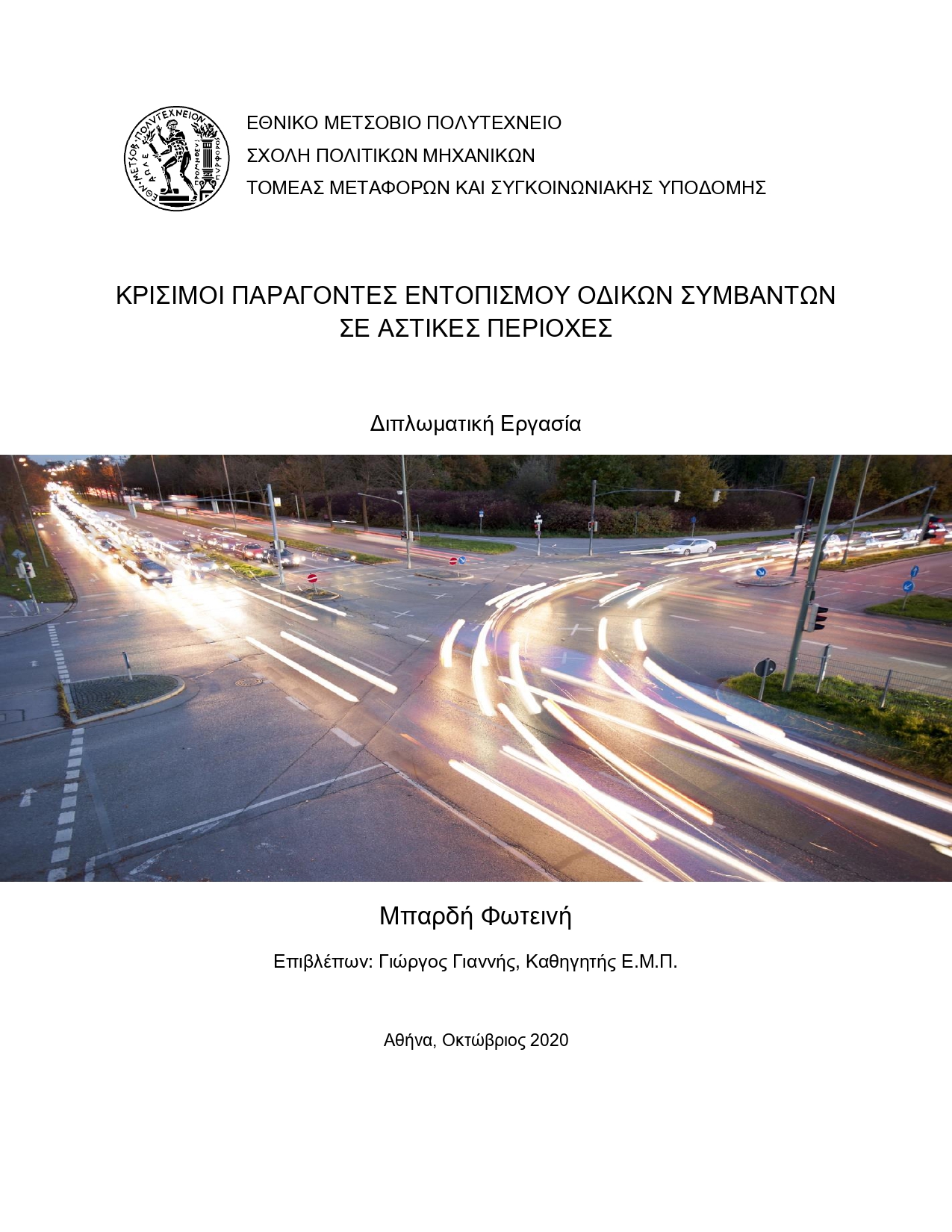
The aim of this Diploma Thesis is to determine critical factors for the identification of traffic events in urban areas. Data were obtained from a large dataset created through a driving simulator experiment. For the data analysis, two statistical models were developed, namely a binomial logistic regression and a random forest one, both of which considering the occurrence of an event as the dependent variable. Furthermore, factor analysis was performed with regards to data concerning one minute before the event, the duration of the event as well as the combination of the aforementioned cases, in order to investigate the existence of common factors in the group of independent variables. According to the results, the random forest model proved to produce more reliable results predicting events with a lower false alarm rate, when compared to binomial logistic regression. Moreover, factor analysis demonstrated that data representing one minute before the event can be described by speed, the deviation of the vehicle from the middle of the road and the distance from the right boundary line. Similarly, data during the event can be better described through speed and longitudinal and lateral acceleration. Finally, suggestions are made for the results use as well as for further research in this topic.
| ID | ad106 |
| Presentation | |
| Full Text | |
| Tags | driving simulator, machine learning, statistical modelling, urban mobility |







